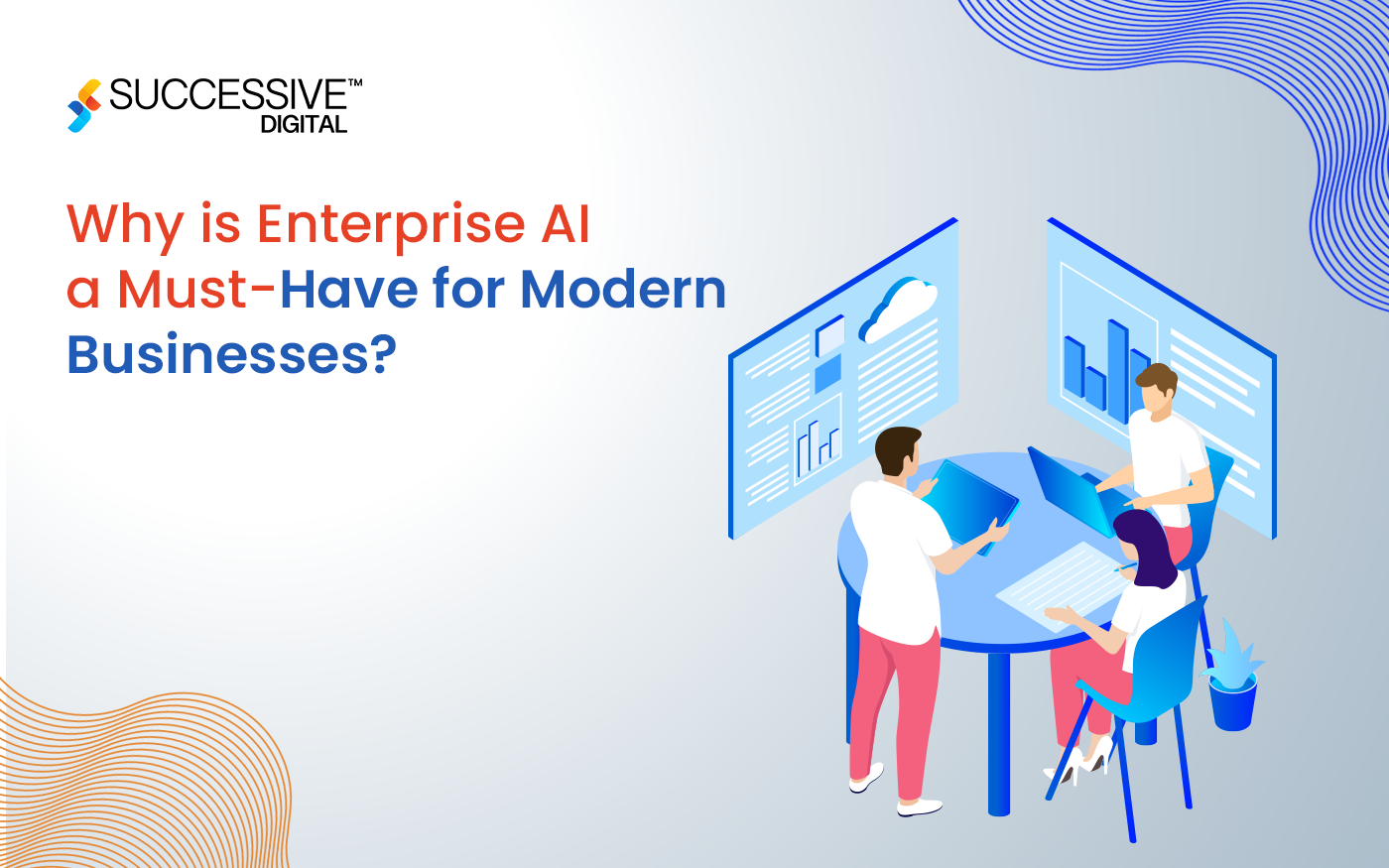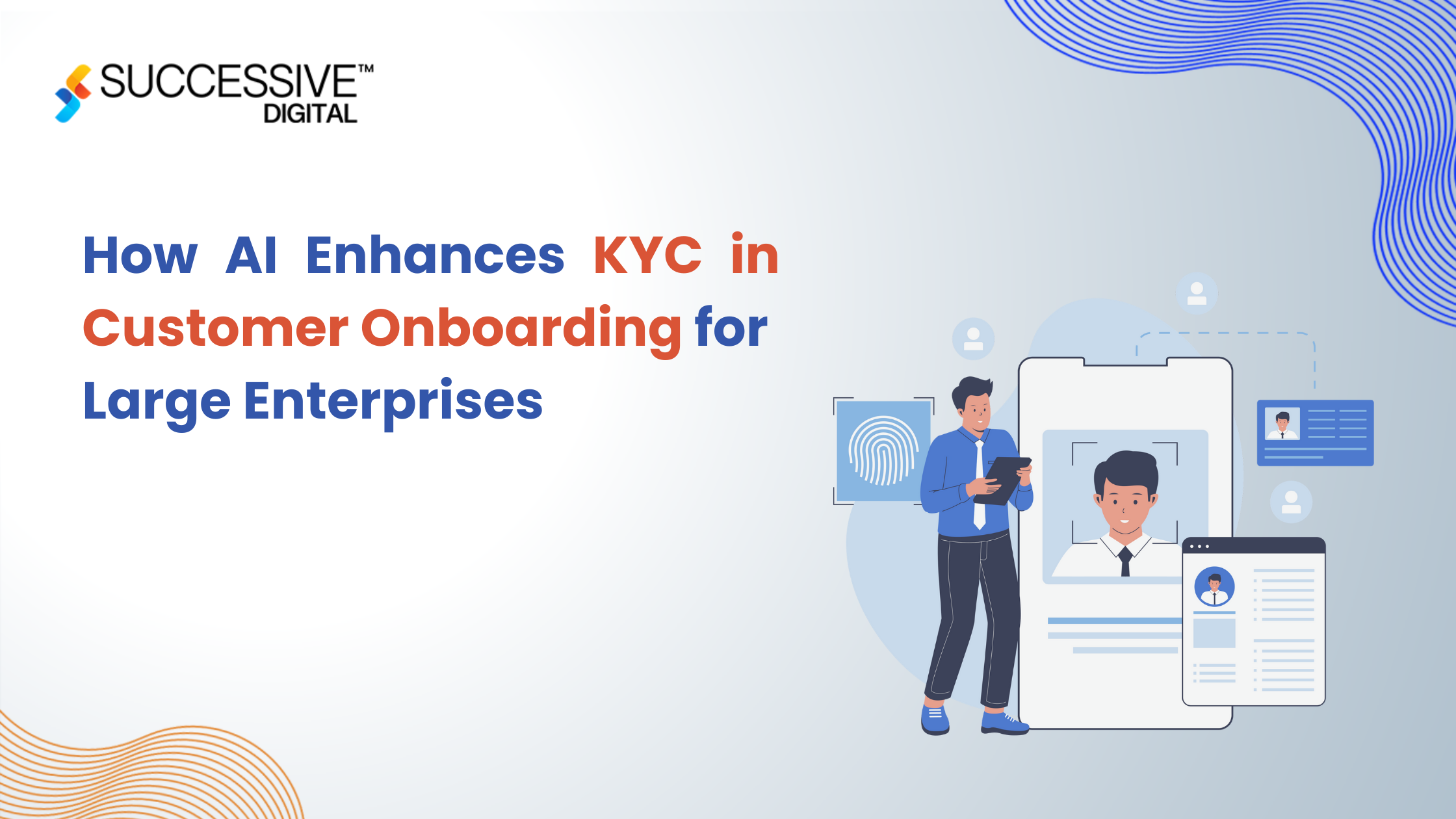No business now can survive without data driven decision making. Companies are constantly seeking innovative methods to leverage information for better decision-making and growth. While traditional data analytics has been a cornerstone for deriving insights, AI-powered data analytics takes this process to new heights. But why should businesses consider upgrading to AI-enhanced analytics? This article delves into the benefits of AI-powered data analytics, why it surpasses conventional methods, and how it is revolutionizing key industries with specific use-cases.
What is Data Analytics?
Data analytics refers to the process of analyzing raw data to extract valuable insights, detect patterns, and guide data-driven decisions. Traditional data analytics methods include statistical analysis, data mining, and predictive modeling. Organizations across industries leverage data analytics to enhance customer experiences, improve operational efficiency, and mitigate risks. This type of analytics relies on historical data to uncover trends and insights that might otherwise go unnoticed.
Limitations of Traditional Data Analytics
Traditional data analytics involves analyzing historical data using statistical tools, data mining, and basic predictive modeling. While these methods have served well in extracting insights and guiding decisions, they come with significant limitations:
- Dependence on Manual Input: Traditional analytics often require manual data preparation and analysis, which can slow down decision-making processes.
- Static Insights: Basic analytics can identify patterns and trends but lacks the adaptability to adjust in real time.
- Limited Scalability: As data volumes grow, traditional methods struggle to process large datasets efficiently without substantial human oversight.
What is AI-Powered Data Analytics?
AI-powered data analytics integrates machine learning (ML), natural language processing (NLP), and other AI algorithms into data analysis. This advanced analytics process goes beyond mere pattern detection, allowing systems to interpret, learn, and make recommendations based on data. AI-powered analytics can process vast amounts of unstructured data, adapt based on new inputs, and evolve its predictions over time. By automating complex analytical tasks, AI-powered data analytics enables businesses to make quicker, more accurate, and highly scalable decisions.
Key Benefits of Upgrading to AI-Powered Data Analytics
- Enhanced Real-Time Processing
AI-powered analytics can process and interpret data in real-time, enabling businesses to make timely decisions. For instance, in the finance sector, AI-driven data insights help detect fraudulent activities and automate risk management. - Predictive and Prescriptive Power
Where traditional analytics stop at identifying trends, AI analytics predict future outcomes and recommend optimal courses of action. This predictive and prescriptive capability helps industries anticipate market changes, adjust strategies proactively, and optimize resources. - Scalability and Efficiency
AI-powered systems handle large data sets with ease, making them more scalable than traditional solutions. Automated data preparation and analysis save time and resources, allowing teams to focus on strategic initiatives rather than data wrangling. - Continuous Learning and Adaptability
AI analytics systems are not static; they learn and adapt from new data inputs. This continuous evolution improves their accuracy and relevance over time, ensuring that businesses stay ahead of the curve with minimal human input. - Comprehensive Insight Generation
AI-powered analytics provide deep insights by processing both structured and unstructured data, such as text, images, and sensor data. This broader scope of analysis unlocks new opportunities for growth and innovation.
Key Drivers for Upgrading to AI-Powered Data Analytics
Industries that upgrade to AI-powered analytics experience tangible improvements in decision-making, operational efficiency, and growth. Here’s why upgrading is a strategic move:
- Automated Data Processes: Reduces reliance on manual processes and accelerates data preparation and analysis.
- Improved Accuracy: Machine learning algorithms refine their predictions with each iteration, enhancing the precision of insights.
- Strategic Competitive Advantage: Early adopters of AI-powered analytics gain a competitive edge by harnessing deeper, faster insights than their peers.
- Resource Optimization: AI analytics optimize the use of data assets and reduce operational costs by automating complex analytical tasks.
Comparing Traditional Data Analytics and AI-Powered Data Analytics
| Feature | Traditional Data Analytics | AI-Powered Data Analytics |
| Methods Used | Statistical tools and historical analysis | Machine learning, NLP, and computer vision |
| Real-Time Adaptability | Low | High |
| Human Intervention | High | Minimal |
| Scalability | Limited | Extensive |
| Predictive Capabilities | Basic | Advanced predictive and prescriptive analytics |
Types of AI-Powered Data Analytics Solutions
AI-powered data analytics encompasses various methodologies, each offering unique insights and strategic advantages. From understanding past performance to making precise predictions and autonomous recommendations, these analytics types—descriptive, diagnostic, predictive, prescriptive, and cognitive—equip organizations to transform data into actionable, growth-oriented decisions.
Descriptive Analytics
Descriptive analytics provides a foundational understanding of what has happened in the past by summarizing and analyzing historical data. It identifies trends, patterns, and anomalies in data, offering organizations a structured view of previous outcomes and performance. For example, a retail business may use descriptive analytics to analyze last quarter’s sales performance. This insight helps businesses measure success and recognize patterns but has limitations in addressing why certain events occurred or in forecasting future trends. Descriptive analytics is crucial for establishing baselines and gaining insights into past performance, serving as a starting point for deeper analytical models.
Diagnostic Analytics
Diagnostic analytics builds upon descriptive analytics by answering the “why” behind observed outcomes. In the retail example, diagnostic analytics could reveal why certain products performed better—such as seasonal demand, promotions, or regional preferences. By investigating data more thoroughly, it identifies underlying causes for specific events or trends, providing actionable insights that go beyond mere observation. While descriptive analytics tells what happened, diagnostic analytics dives into why it happened, helping organizations understand causality and make improvements. This added layer of insight enables businesses to address inefficiencies or issues at their source and lays the groundwork for predictive and prescriptive analytics.
Predictive Analytics
Predictive analytics progresses from understanding past occurrences to forecasting future outcomes. Using historical data and algorithms, it calculates the probability of specific events, enabling companies to anticipate future trends or potential risks. In the retail context, it might predict which products will perform well in the next quarter by analyzing past patterns and customer behavior. By moving beyond the “why” to predicting “what might happen,” predictive analytics offers forward-looking insights that help organizations prepare and allocate resources effectively. However, predictive analytics stops short of advising on the best course of action, which is where prescriptive analytics adds additional value.
Prescriptive Analytics
Prescriptive analytics enhances predictive capabilities by recommending specific actions based on forecasted outcomes. For instance, using prescriptive analytics, the retailer can determine optimal stock levels, marketing tactics, and pricing strategies for maximum profitability in the upcoming quarter. It answers the question, “What should be done?” by analyzing potential decisions and outcomes, and providing optimized recommendations for achieving desired results. This approach empowers businesses to act on insights with precision, reducing uncertainties around decision-making. While predictive analytics forecasts possibilities, prescriptive analytics enables proactive responses, improving operational efficiency and guiding strategic decision-making.
Cognitive Analytics
Cognitive analytics extends beyond all previous types by mimicking human cognitive processes through technologies like deep learning, natural language processing, and neural networks. In the retail example, cognitive analytics might interpret customer sentiment in real time, adapt promotional strategies based on changing trends, or autonomously adjust inventory levels based on predicted demand. It interprets, learns, and adapts from data, enabling systems to derive nuanced insights and respond autonomously to complex queries. Unlike the static insights of earlier models, cognitive analytics can continuously improve its own predictions and recommendations, adapting in real-time as new data becomes available. This evolution toward adaptability and continuous learning marks a significant advancement, enabling systems to handle complex, unstructured data and automate decision-making processes with a high degree of accuracy.
Current Stage of Data Analytics Adoption Across Industries
The adoption of data analytics solutions varies significantly across industries and maturity stages, with many organizations advancing quickly due to the demand for AI-driven insights. Studies show that approximately 42% of companies have actively implemented AI in data analytics, with another 40% actively exploring it, highlighting the gradual yet widespread interest across sectors, particularly in industries like finance, telecom, and manufacturing. This momentum is largely driven by the increased accessibility of AI tools and a strong push towards automation in data processes.
However, challenges persist. For example, McKinsey found that over 75% of companies struggle to fully implement AI best practices due to barriers like the complexity of managing extensive data, skills gaps, and ethical considerations. Furthermore, only 21% of companies report having policies to manage AI risks, with inaccuracy and security risks being top concerns in generative AI adoption. As a result, companies are either in early deployment phases or focused on strategic planning to tackle these obstacles effectively.
For better understanding, we have classified the AI adoption and state into three stages. Let’s explore them and understand how adaptable industries are for AI adoption and at what stage they are:
Early-Stage Adoption: Industries such as construction and agriculture are still in early-stage adoption, primarily using descriptive analytics for data gathering and analysis. This stage focuses on recording what has happened, allowing companies to build foundational databases and improve basic operational efficiencies. The goal at this stage is primarily to establish a robust data collection system, setting the groundwork for more sophisticated analytics in the future.
Intermediate Adoption: Sectors like healthcare and education have moved towards diagnostic and predictive analytics, using data to uncover root causes and predict future trends. This phase marks a shift from merely understanding past data to analyzing why certain trends occur and forecasting future outcomes. The goal at this stage is to develop actionable insights from data, enabling more proactive decisions and improvements. By identifying patterns and predicting outcomes, organizations begin transforming operations, building a foundation for advanced, prescriptive, and cognitive analytics in the future.
Advanced Adoption: Advanced sectors such as finance, retail, and technology are utilizing prescriptive and cognitive analytics to forecast, recommend, and even automate decisions, pushing data analytics to a high level of sophistication. Prescriptive analytics offers actionable recommendations, enabling these industries to optimize decision-making processes based on predictive insights. This stage represents the peak of data analytics maturity, where insights not only guide decisions but can automate them, creating a cycle of continuous improvement.
How AI-Powered Data Analytics Is Accelerating Growth Across Industries?
AI-powered data analytics is redefining growth trajectories by enabling industries to leverage vast data insights. Here’s a closer look at how it’s shaping key sectors:
Healthcare
- Application: AI-powered data analytics is used in patient monitoring, predicting disease progression, and drug discovery.
- Impact: The technology reduces diagnosis times and improves patient outcomes by providing personalized treatment plans. For example, predictive analytics can forecast disease outbreaks, aiding in faster resource allocation.
Retail
- Application: By using predictive and prescriptive analytics, retailers can optimize inventory management, personalize customer experiences, and predict future trends.
- Impact: The adoption of AI-powered analytics allows retailers to boost revenue and enhance customer loyalty through targeted campaigns and optimized product recommendations.
Financial Services
- Application: Financial institutions use cognitive analytics to detect fraud, automate customer interactions, and manage risks.
- Impact: AI-driven data insights minimize fraud risk, enhance customer satisfaction, and enable real-time decision-making for better risk management.
Manufacturing
- Application: Predictive analytics in manufacturing helps prevent equipment failure, optimize production schedules, and reduce waste.
- Impact: By predicting machinery malfunctions before they occur, companies can significantly reduce downtime and maintenance costs. Additionally, AI-powered insights enhance product quality and operational efficiency.
Telecommunications
- Application: AI analytics helps telecom companies with network optimization, customer churn prediction, and predictive maintenance.
- Impact: Companies can preemptively manage network issues, reducing downtime, and can also tailor services to reduce customer churn, ultimately enhancing customer satisfaction.
Conclusion
For businesses aiming to leverage data for sustainable growth and efficiency, upgrading to AI-powered data analytics is more than a technological enhancement; it’s a strategic imperative. By automating complex analytical tasks, offering real-time insights, and adapting continuously, AI-powered data analytics provides a foundation for smarter, faster, and more data-driven decision-making. Embracing this transition not only positions businesses for current success but also prepares them for a future where data-centric innovation drives competitive advantage.












